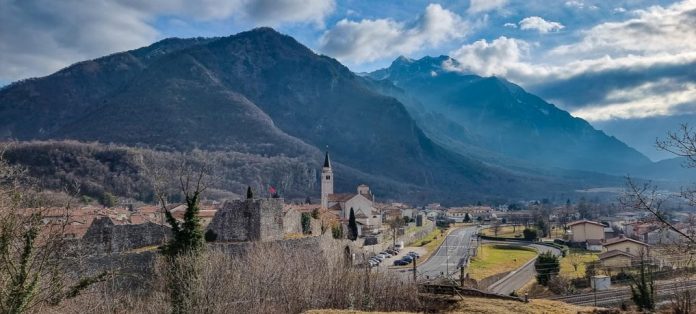Word and photography: Victor Caneva
On May 6th, 1976, Friuli Venezia Giulia was rattled to its core. A devastating earthquake registering 6.4 on the Richter Scale transformed the face of the region, especially the Friulian Pre-alps, forever. The trembling was felt all the way to Ljubljana to the east, Venice to the west, Trieste to the south, and beyond.
Gemona del Friuli, a major town close to the epicenter of the shallow and therefore particularly destructive quake, was largely destroyed. All told, the earthquake claimed 990 lives, leveling towns and affecting 77 communities.

The story of the 1976 Friuli Earthquake certainly involves destruction, but more importantly, it is a poignant example of resilience. Towns were passionately rebuilt. Lessons were learned and earthquake safety standards were revised and implemented throughout Italy. People came together and helped one another.
Venzone is one of the most striking (and delightful) examples of the perseverance and dedication of the Friulian people in the aftermath of this tragedy. The only remaining 14th-century walled city in FVG, Venzone was significantly damaged in the initial quake, but strong aftershocks on September 15th dealt the town a devastating blow. Buildings that had initially survived succumbed to this second pummeling and collapsed.

Thanks to a potent combination of civic pride and surprisingly complete architectural records, the citizens of Venzone quickly rose to the challenge of not only rebuilding their town, but reconstructing it with vigorous historical accuracy. A committee dedicated to preserving Venzone’s cultural heritage formed quickly and professionals and volunteers worked together to organize, classify and protect the town’s legacy. After some houses were destroyed in the clean-up of the quake, Venzone’s residents demanded that the city be rebuilt with historical authenticity via petition.
What followed was a tireless and exhaustive restorative process that lasted years. Stones were collected, labeled and, when possible, placed in the exact locations they rested before they fell. Replacement pieces were marked with a special carving indicating they were not authentic. As you walk along Venzone today, you can still observe the markings on stones in the facades of the evocative medieval structures – evidence of the painstaking, but worthwhile process it took to restore them to their former glory.

Now, Venzone oozes charm. It was chosen for the honor of “the most beautiful town in Italy” in 2017 by a national television show (and that’s saying something in a country known as the belpaese!) It’s streets are quaint and drip with atmosphere, ever so pleasantly transporting the visitor back in time. I’ll also add that I have yet to enjoy a meal in Venzone that was not completely delicious.
At just over an hour’s drive away from Trieste, resilient Venzone is an excellent day trip for Trieste residents itching to experience more of the region. Some of her scars are still visible, serving as reminders of her arduous past, but Venzone is reborn and stands as a gorgeous testament to the love and dedication of her residents.





























